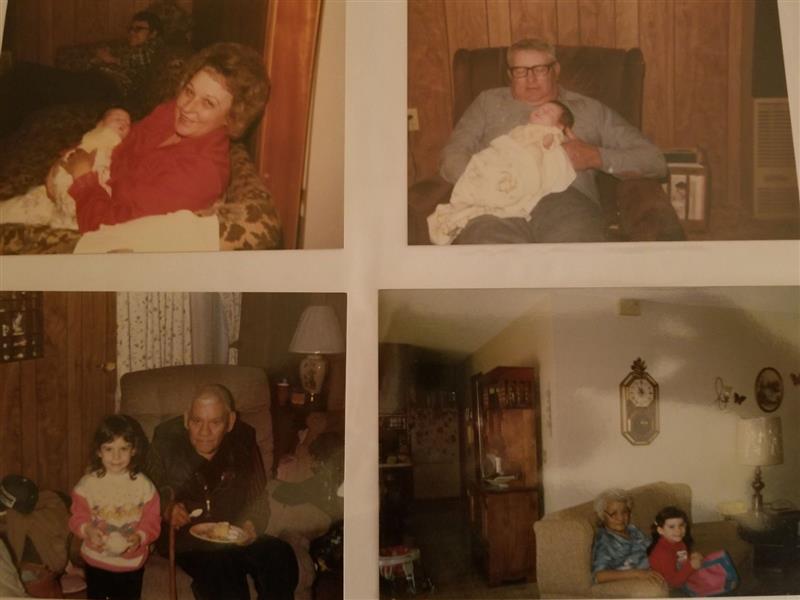Table of Contents
“I could have had my grandparents a whole lot more time than I did had they been taken care of properly for their disorders,” says Ashley Krivohlavek, whose mother is additional than 1-50 % Cherokee, earning Ashley a quarter Cherokee.
Skipping via memories of her maternal grandparents on the reservation in Salina, Oklahoma, Ashley inevitably remembers becoming close to 3 a long time outdated and sitting beside her grandmother in a health-related clinic waiting around home for what appeared like limitless hrs. Again then, there had been no scheduled appointment slots it was strictly a initial-arrive, very first-served program. If you arrived after 9 am, you had been too late to be found that working day.
“She didn’t know how to push,” Ashley states, describing her grandma. “She was blind from glaucoma by that level, so she by no means needed to study. I think she only produced it to eighth grade just before she experienced to just take care of her family members — her brothers and sisters — from her mom’s health issues.”
When asked about any strengths or benefits of residing remotely, at initially Ashley uncovered it complicated to assume outside of the hardships so etched into her reminiscences and stories explained to to her by her family members associates. “Family is at the middle of every thing,” she shared. “I consider living on the reservation and staying shut to folks that are the exact same as you, and are heading as a result of the similar struggles as you, are of advantage for the reason that you can enable every other out.”
Variances in Treatment method Across Generations
Ashley’s maternal grandfather was diagnosed with rheumatoid arthritis, but he hardly ever received correct treatment, she explains. “He only had his joints drained of synovial fluid,” she recalls. “He walked with a cane and was disabled.”
Now 39, Ashley lives with psoriatic arthritis (PsA), Raynaud’s, and polycystic ovary syndrome (PCOS). She simply cannot assist but distinction her have treatment method expertise in Tulsa, Oklahoma, with the lack of procedure her grandparents obtained on the reservation. She characteristics the remarkable big difference to the substantial sources available to her in a more substantial city.
“When I go to see my GP, at the Creek Nation, it is in a greater metropolitan space,” Ashley clarifies. “It’s in Tulsa, Oklahoma, vs . Salina, Oklahoma, which is a blip on the map — you blink and you miss out on it. That appropriate there is a dilemma. I get treated in a different way just due to the fact I’m in a metropolitan area. I’m genuinely thankful that I’ve received this man or woman as my medical professional, but once again, they go all over a whole lot. You hardly ever know if you’re going to be able to continue to keep that medical professional very long-time period.”
Underrepresentation in the Health care Subject
Native Us residents and Alaskan Natives make up only .4 percent of the medical doctor workforce, building it unlikely for a health practitioner to be paired with a patient of the very same history.
A 2022 research published in JAMA highlighted the illustration of American Indian and Alaska Indigenous people in health care coaching. In contrast to their white friends, American Indian and Alaska Indigenous persons experienced 63 percent decrease odds of implementing to health-related faculty. On the other hand, investigate exhibits that possessing shared identity in race and ethnicity between client and health practitioner can lead to increased charges of affected person satisfaction and improved communication amongst doctors and clients.
Ashley speaks to the variability in wellness care suppliers on reservations. “A lot of medical professionals from other countries do their practice hours on the reservation. You under no circumstances have a common general medical doctor (GP) you see whoever’s there and it switches all the time,” she says. “You just get who you get.”
Remembering the Past to Transform the Foreseeable future
It is important to recall and converse about the previous. “Even even though you will imagine the Path of Tears was in the center of the 1800s, people impacts are continue to lasting,” she suggests. “They’re even now there. A wave reverberates via the generations.” The Trail of Tears was when the Cherokee Nation was compelled to transfer from their houses in the southeastern United States to Oklahoma in 1838-1839, because of a regulation signed by President Andrew Jackson referred to as the Indian Removing Act of 1830.
Overall health care is not always the first priority when you’re just trying to get the job done and survive the day and start off all around tomorrow, she cautions. She fears it might not be a precedence to some until eventually it is an emergency.
“So a ton of it is just cyclical,” she elaborates. “They can not get terrific careers for the reason that they reside on a reservation and it’s tough to get off the reservation simply because of communication boundaries and transportation obstacles. So, if you’re just trapped, wellbeing care is the the very least of your anxieties.”
Wanting at the past and current constraints, Ashley buckets strategies to make improvements to well being results on the reservation into the subsequent:
- Consistent conventional of care throughout reservations
- Diet and training education and learning and accessibility
- Patient counseling on health-related therapy
Reliable conventional of care across reservations
Inconsistent wellness care can make chronic sickness management specifically tough for particular populations, Ashley details out, making use of her aunt’s diabetic issues practical experience as an illustration. In excess of the several years, her aunt’s diabetes administration plan has varied based on the dealing with medical doctor, creating it difficult to stabilize her blood sugar.
This challenge is exacerbated by the limited foods choices on the reservation, which generally consist of shelf-secure goods superior in preservatives and sugars — vital contributors to swelling and diabetes. Interestingly, diabetes was a unusual problem between Native peoples right up until the 1940s. The introduction of these commodity foodstuff led to a surge in obesity and diabetes conditions. Although much more healthy solutions have become more and more available, not all people has the luxury of deciding upon fresh create above canned merchandise.
Having said that, initiatives like the Food items Distribution Plan on Indian Reservations (FDPIR) Self-Resolve Demonstration Job offer some hope. This system makes it possible for tribes to nutritional supplement USDA-authorized foodstuff with tribally sourced goods, growing food items alternatives for tribal members.
Nourishment and exercise education and learning and obtain
Obtain to clean food and appropriate nourishment is a critical problem for numerous Indigenous American reservations, several of which are found in foods deserts where by wholesome, affordable solutions are minimal. Giving in-human being visits to these reservations a pair of times a 7 days for cost-free nourishment and work out lessons could be a major step in enhancing wellbeing results, states Ashley. Specified that web access can be sparse on some reservations, relying exclusively on on the internet sources may perhaps not be successful for everyone. In-person academic periods would help bridge this gap and could offer customized direction on how to manage a well balanced eating plan and an energetic way of life with the assets readily available.
Individual counseling on healthcare remedy
Giving counseling as folks are prescribed drugs could also aid individuals make way of living alterations in regard to nourishment and workout. Ashley remembers a spouse and children member with diabetes currently being handed drugs to acquire with no any counseling on lifestyle choices. The high quality of health and fitness treatment may differ greatly across centers, so a different individual could receive extra steering and guidance than another, so there wants to be a conventional of care.
Advocating for Change in Well being Care Inequities
Ashley retains the distinction of currently being the initially university graduate on her mom’s aspect of the spouse and children — a considerable achievement considering her mother has 7 siblings and Ashley herself has a lot of cousins.
This instructional journey has given Ashley a one of a kind point of view on health and fitness treatment. Though she has not individually seasoned the exact healthcare issues that a lot of in her neighborhood deal with, witnessing these struggles has experienced a profound effects on her. This motivates her to use her voice and placement to advocate for far better wellness care for all.
Placing her passion into motion, Ashley serves as an ArthritisPower Patient Governor with the World-wide Balanced Residing Foundation. As a result of this job, she channels her ordeals and insights into tangible efforts to improve overall health care entry and high quality.
“As an individual with certain privileges, I really do not assert to realize everyone’s struggles,” Ashley acknowledges. “But I have enormous pride in my family’s resilience, and I understand that using on health care inequities is a considerable responsibility—one I’m enthusiastic about tackling. Staying in a position to effect beneficial alter, specifically in honor of my grandparents, means the environment to me.”
Can you relate to Ashley’s tale? Do you have suggestions on how to tackle wellness care inequities inside the Indigenous neighborhood? We would enjoy to listen to from you. Email: [email protected].





